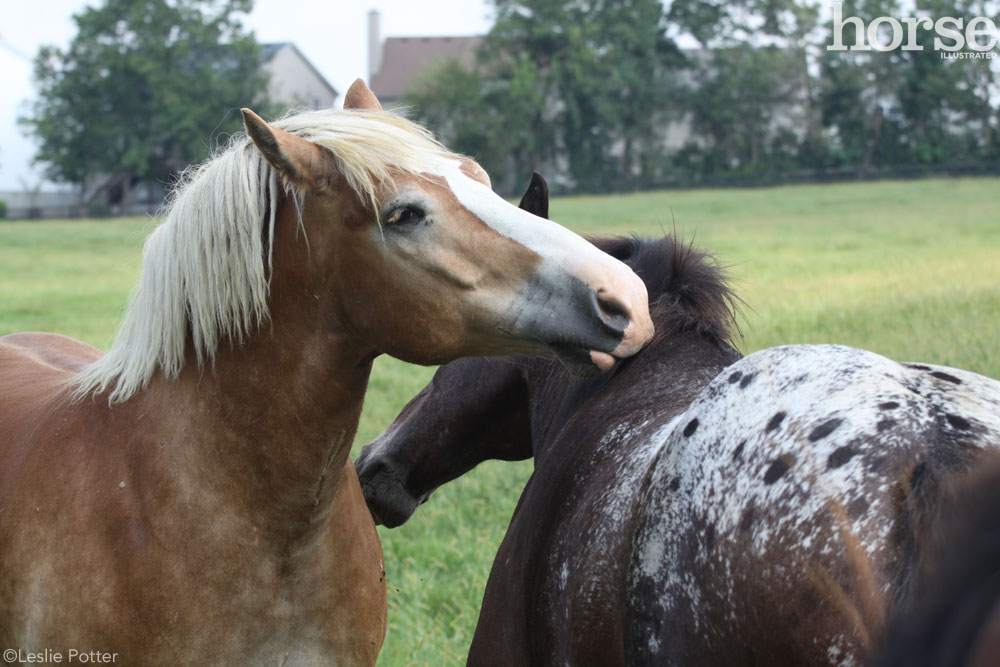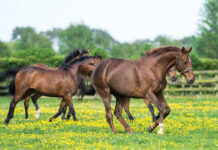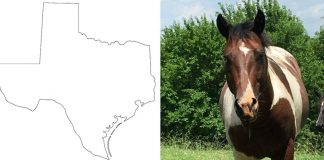
It’s always fun to watch equine herd dynamics in action. There is always a lot of subtle—and not so subtle!—communication going on, including noises, body language, and facial expressions. Once you learn to understand what the different signs mean, watching all this unfold can be quite entertaining. And who knows—maybe you can learn a thing or two from your animals!
1. Horse arguments don’t last long
2. Leaders are a good thing—in moderation
Many times in a horse herd, a natural leader emerges. This is the horse who declares that “Today we’re going to the back of the pasture to graze,” and the one who says, “We’re not going to run around right now, we’re going to stand in the sunshine and relax.” The rest of the herd tends to recognize this leader and listen to them—to a point. The other horses use their leader as a guide, but they never forget to be individuals. If one member of the herd really doesn’t want to graze in the back, they’re free to stay in the front. And if someone is feeling spunky and wants to run around, they can—the herd boss won’t (usually) care too much. Again, you can likely make some useful observations from this: people who are natural leaders can still guide while avoiding being pushy, and followers can use their own judgement in addition to the leader’s guidance.
3. In tough times, stick together!
Have you ever watched a group of horses outside on a windy day? They will often stand together in a group, and all face away from the direction the wind is blowing. This is another observation we can learn from: when things get tough, stick together! The wind will stop eventually.
What are some of your favorite equine herd behaviors?
Daniel Johnson is a freelance writer and professional photographer.
He’s the author of several books, including How to Raise Horses:
Everything You Need to Know, (Voyageur Press, 2014).See Dan’s
horse photography at www.foxhillphoto.com or like his Facebook page: www.facebook.com/foxhillphoto







Oh, that was a very good read/ or article to read, and so true.
great info
cool
Great, be sure to check out the links of the author.
great info
I looked at the links by the author, and great pictures, also good article.